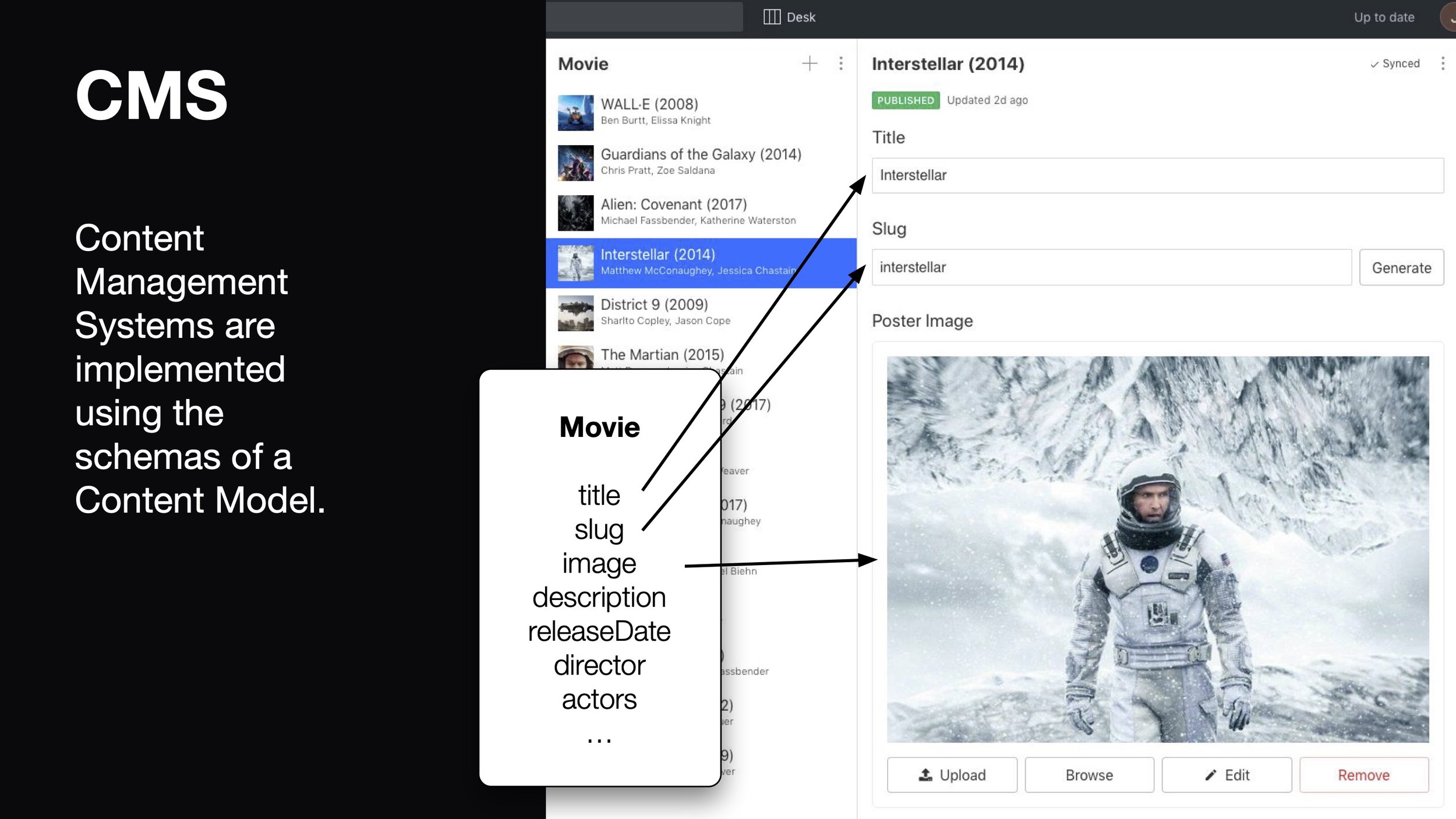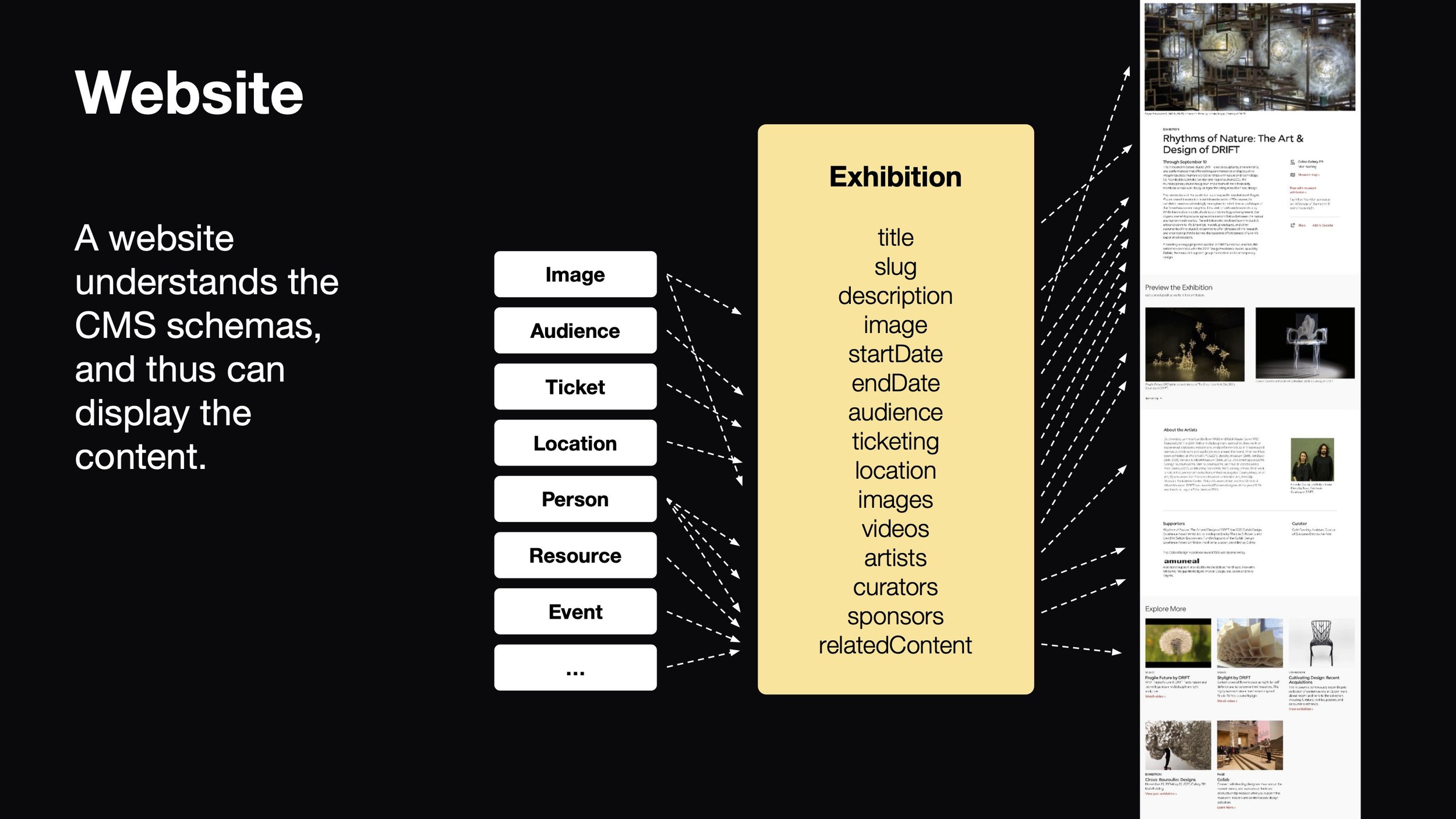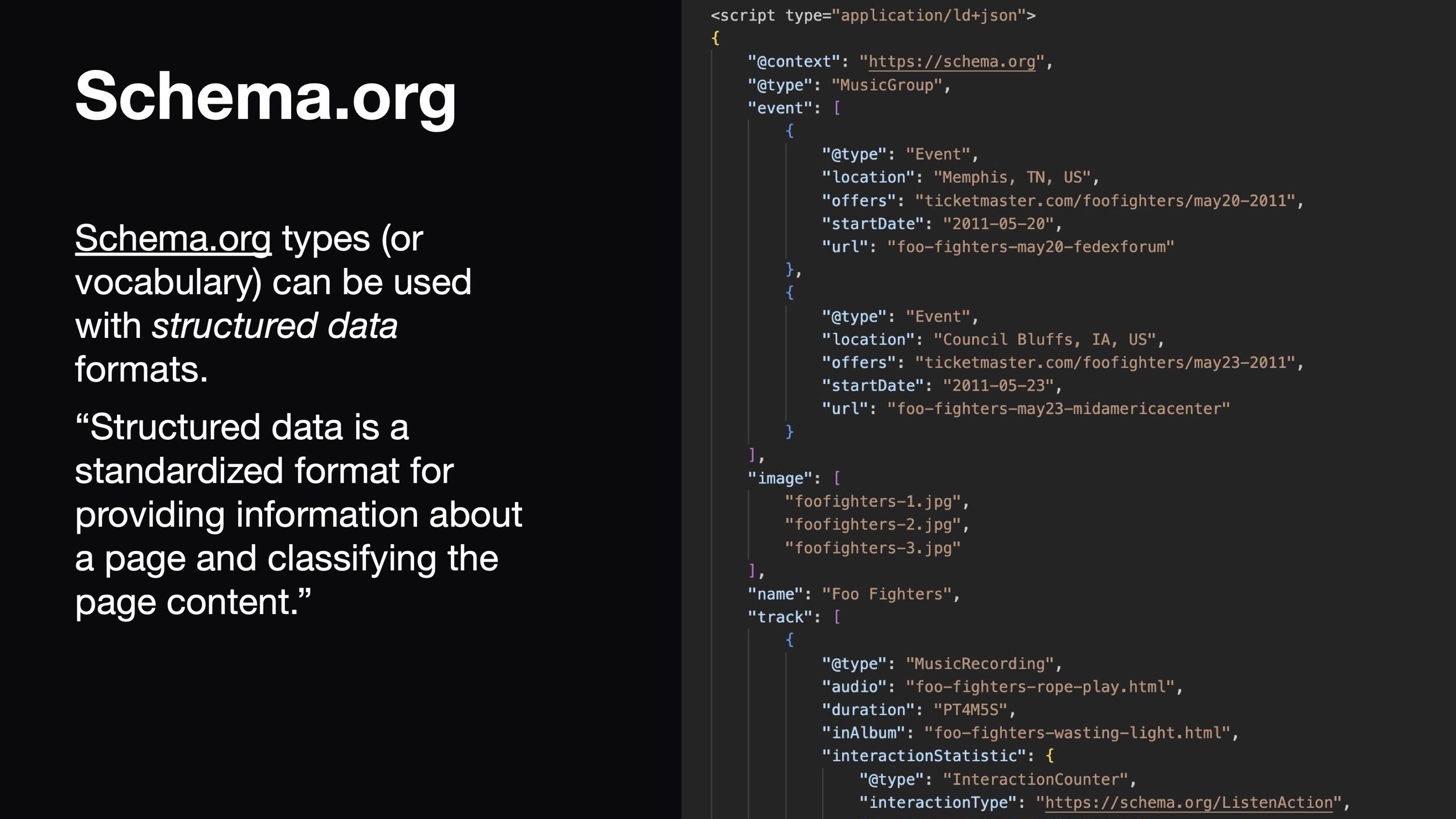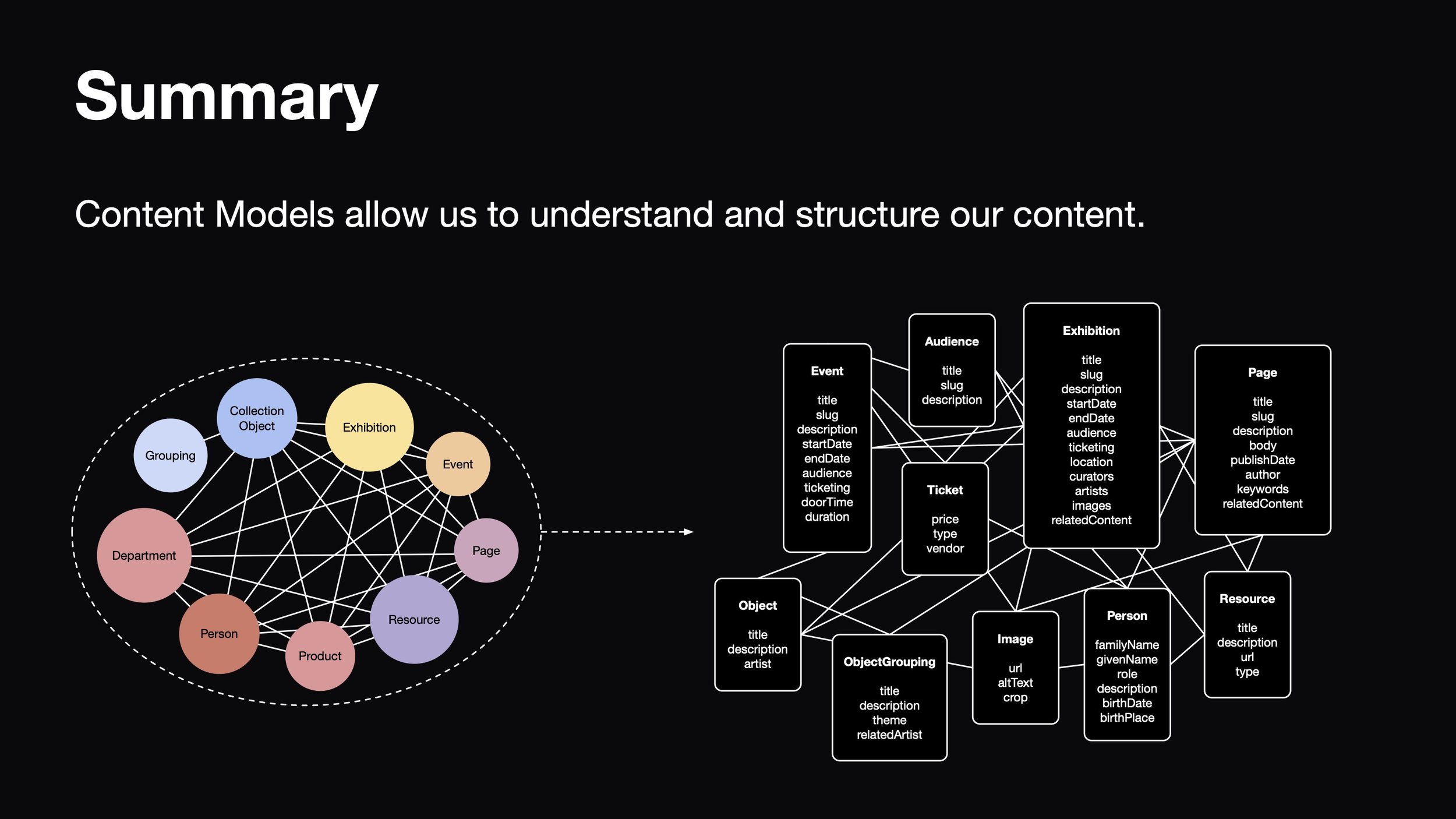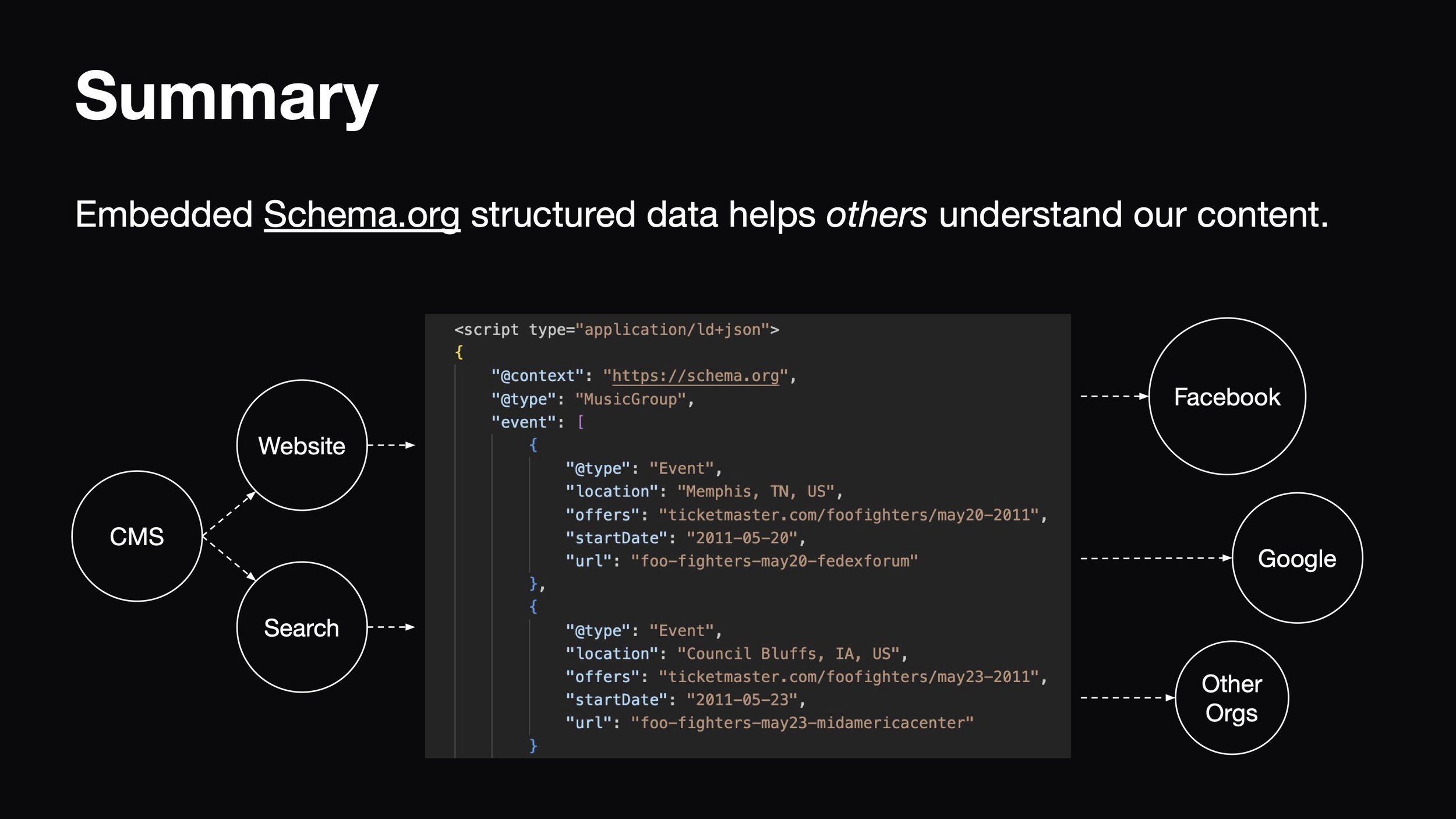Content Models
On January 23rd I gave a high-level presentation introducing content models in the context of our CMS and website project.
In the beginning was content, and it was a mess…
As we analyze our content, unique content types emerge.
As well as relationships between those types.
Looking at each type individually, we notice common attributes.
New types and relationships between types emerge…
Types are defined as schemas, and together they form a Content Model.
Content Management Systems are implemented using the schemas of a Content Model.
A website understands the CMS schemas, and thus can display content.
CMS content is not just limited to websites!
CMS content is not just limited to websites!
A commonly used content model is Schema.org. Founded by search engines, Schema.org is a “collaborative, community activity with a mission to create, maintain, and promote schemas for structured data on the Internet, on web pages, in email messages, and beyond.”
Schema.org defines schemas for all kinds of content including Events, Exhibitions, Artworks, Web Pages, Books, Products, Learning Videos, Job Postings, and more.
Schema.org types (or vocabulary) can be used with structured data formats. “Structured data is a standardized format for providing information about a page and classifying the page content.”
One common structured data format is JSON-LD, which is embedded within web pages. Search engines use JSON-LD structured data to improve search results and provide features like rich snippets.
Content Models allow us to understand and structure our content.
A CMS implements a Content Model, and serves that content to clients.
Embedded Schema.org structured data allows others to understand our content.






